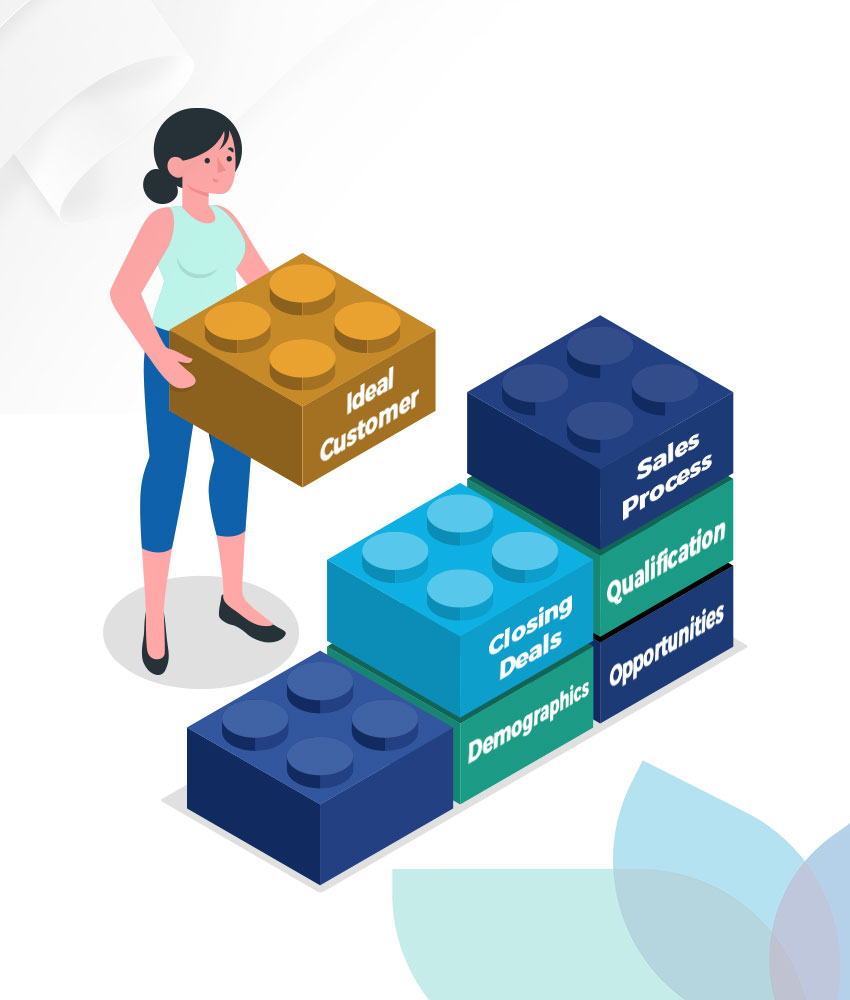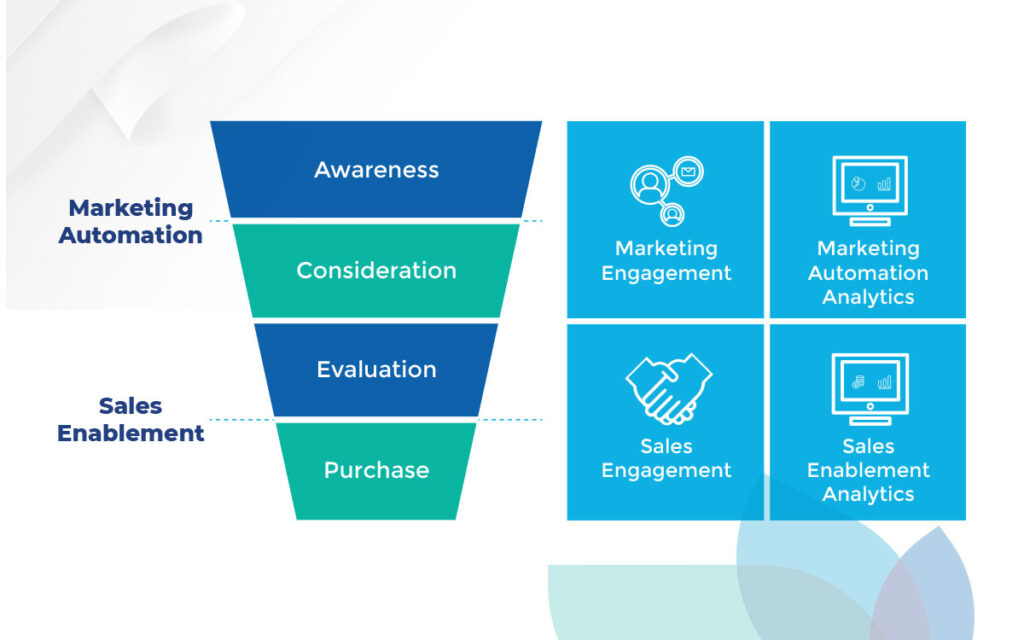One of the great challenges of sales teams is having team members produce results consistently. In most sales teams, companies will experience only 20% of the team producing and often carrying the weight of the underperformers.
For senior executives and sales leaders, the question that needs to be answered is, “How can we assist all the sales team and empower them to deliver results and not just rely on the top performers? This is where a sales enablement strategy becomes vital to your company’s ability to drive growth.
What is a Sales Enablement Strategy?
A sales enablement strategy is the methodology of equipping sales teams with the tools, content, connection and guidance, and training they need to effectively engage buyers on an ongoing basis. Companies no longer look for short training sessions or motivational speeches at the start of the month to drive sales.
High-performing companies understand that sales enablement plays a pivotal role in managing sales teams and connecting marketing with the team through analytics. Sales enablement provides marketing and sales teams with data-driven insights to optimise their business units and drive revenue.
Placing a focus on having a sales enablement strategy supports marketing and sales teams to be more effective through:
-
- Creating connections between your company and your target audience
-
- Enabling salespeople with the relevant content to communicate with target audiences
-
- Providing salespeople flexible ways to reach out and present content
-
- Delivering real-time visibility into customer engagement on your company assets
-
- Applying advanced analytics to optimise sales and marketing focus
-
- Equipping salespeople with focused training and guidance consistently
-
- Measurement of all points and mapping against bottom-line results
The key to all sales enablement processes is flexibility. The market is moving, and buyers are changing their priorities; competitors are applying tactics to secure those targets too. Sales enablement’s role is to create the necessary tools, manage the analytics, and ensure the teams are as close as possible to the market at all times.
Who Owns Sales Enablement?
When it comes to sales enablement, who designs strategies, and trains and coaches salespeople, through the sales process? Traditionally it was considered the role of the sales leader or sales manager to undertake the functions and ensure the team was performing. However, as sales have become more complex with the advent of technology and the demand for marketing and sales alignment, the function of sales enablement can become lost if left for sales leaders to engage and deliver.
Sales enablement, like sales operations, is a position within the sales team reporting to the sales leader. The team size will determine when a sales enablement person is required to be hired, but certainly, it should be sooner rather than later if you are looking for growth.
Sales enablement personnel must be held accountable for implementing a centralised platform capable of delivering the content, customer engagement tools, analytics, and online sales training content for their sales organisation that delivers success for sales teams.
The sales personnel must be committed to using the processes and technology that make the system work rather than applying individualised approaches.
Marketing must be measured to contribute to high potential customer engagement and lead generation to the right target audiences.
The table below illustrates these responsibilities:

Engaging a sales enablement function in the business will vary based on the size of the company, geographical reach and your sales and distribution model. Sales enablement is designed for direct seller models.
The Functions of a Sales Enablement Manager
A sales enablement manager is responsible for enabling the sales team to perform and is measured by their direct influence on increasing sales performance. In some companies, the title may be sales effectiveness or sales readiness manager.
They have strong interpersonal skills to bring the sales team together and engage with the strategy on a day-to-day basis. Their business function is to create sales content, share best practices to win business, and develop training for continual reinforcement.
The role requires sound technical skills to utilise a content management system (CMS), customer relationship management (CRM) system, and sales enablement software.
Sales enablement best practice will:
-
- Create a centralised location for content to be stored (CMS) for marketing and sales
-
- Build the structure of the CMS and how it is organised, including the current “content map”
-
- Develop the tools to close the gap between the marketing and sales function
-
- Have sound knowledge of the CRM and how the sales team must use it
-
- Oversee sales productivity and performance measurement through analytics and provide feedback to salespeople
-
- Work with marketing and sales and identify target decision-makers, potential customers, decision-making blockers, etc., related to the sales process.
-
- Embark on continuous improvement of content and tools for sales enabling them to be competitive and aligned to the buyer journey
-
- Provide feedback from sales to marketing leadership
These are the fundamental functions of the role but may vary at different companies and across the industry’s products and services. In some companies where larger teams exist, it may be necessary to have a sales enablement team with in-field coaching occurring for team members.
Getting Started with a Sales Enablement Strategy
With a sales enablement manager hired, the following steps can assist you in getting started with developing a sales enablement strategy.
-
- Know and Improve Your Processes
For sales enablement to be effective, it must be relevant and fine-tuned for your company. There is no out-of-the-box solution in sales enablement. The company must understand its target audience and ideal customer profile along with the spend levels you require from each customer. The focus of marketing is the first step in sales enablement excelling.
The sales process must be based on what is highly effective in your business, so you are duplicating success across the team. The tools required to assist salespeople and how best to reach out and connect with potential customers.
Communication in both writing and face-to-face enables salespeople to find customers’ needs and close deals.
Finally, the measurement to continually refine and improve processes across all marketing and sales aspects.

2. Involve the Team
Sales teams require every edge available to them in today’s highly competitive markets. In many companies, sales teams are essential stakeholders. They are central to the achievement of revenue for the business, and the investment of a sales enablement person is pivotal to maximising the ROI of the sales team.
A high-performing sales team occurs where these essential stakeholders are engaged with the sales enablement manager, and it can dramatically improve the quality of their customer engagements and results.
Sales is a fast business function and require continual adaption to the market, buyer demands, and flexibility to close deals. The provision of information that keeps salespeople enabled to perform is vital. The engagement of the team is the number one focus of sales enablement.
Aligning Marketing and Sales
The alignment of marketing and sales teams is core to the success of sales enablement. If you divide the sales funnel into four basic stages, you can gain clarity over who is responsible for each stage of the sales cycle.
Traditionally sales were responsible for all four stages, but today, marketing takes a far greater role in the process. The first two stages of the process, awareness and consideration, rely on marketing. Marketing’s ability to be found by potential buyers and provide them with the ability to commence considerating the company as a solution to their requirements. The nurturing of leads and collection of buyer information are central to creating sales opportunities.
Sales guide the third and fourth stages as buyers shortlist companies they are interested in evaluating more closely and making a purchasing decision.
The alignment of marketing and sales has never been more critical to delivering sales revenue goals for the company. The attraction of the right agreed audience and the flow through the stages require a perfectly aligned sales enablement strategy.

Understanding the difference between sales enablement and sales operations
Some companies have developed the function of sales operations over the last decade and are the right person for the sales leader. Some may consider a cross-over between the role of operations and enablement, but they are two completely different functions.
Sales operations are the business contributor to the sales organisation with a focus on analytics, contracts between the company and sales (incentives) and customer – proposals. Sales enablement is the people contributor to the sales organisation focused on onboarding, sales communications, and coaching and training skills.
Both teams work to increase the effectiveness and efficiency of the sales team, but there are practical differences between the two roles.
In a high-level review of the differences:

The Bottom Line – Increasing Revenue
The purpose of your sales enablement strategy is to increase revenue. The revenue improvement is achieved by salespeople connecting with the right audience that serves the business’s goals, improving the performance of your salespeople when engaging with prospective buyers and guiding them through the buyer journey.
The critical difference is shifting from a minority of the sales team delivering sales goals and shifting to a high majority, if not all, delivering planned sales goals.
The consistency of performance will be directly influenced by the sales enablement manager contributing to the individual’s performance and working with them closely to modify actions and communications to influence outcomes positively.
With the transparency available through technology for the performance of content, tools and performance, having a sales enablement strategy moves to a number one priority for companies focused on delivering results.
If you found this article helpful, follow us on LinkedIn or subscribe to Our Insights on the right-hand column of this page, to make sure you don’t miss new posts.
Articles you may also be interested in reading:
© Y2022 Sales Focus Advisory. All Rights Reserved.
